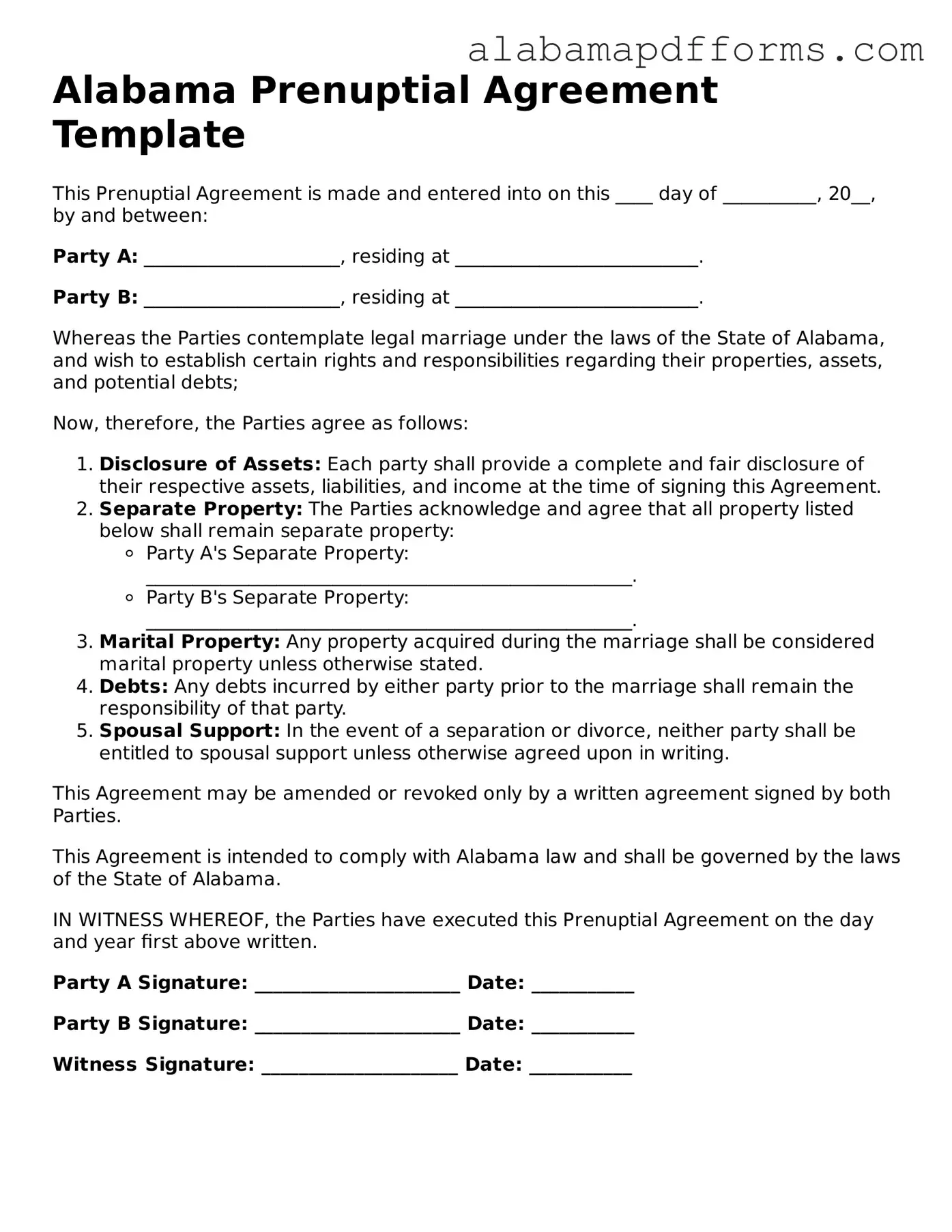Alabama Prenuptial Agreement Template
This Prenuptial Agreement is made and entered into on this ____ day of __________, 20__, by and between:
Party A: _____________________, residing at __________________________.
Party B: _____________________, residing at __________________________.
Whereas the Parties contemplate legal marriage under the laws of the State of Alabama, and wish to establish certain rights and responsibilities regarding their properties, assets, and potential debts;
Now, therefore, the Parties agree as follows:
- Disclosure of Assets: Each party shall provide a complete and fair disclosure of their respective assets, liabilities, and income at the time of signing this Agreement.
- Separate Property: The Parties acknowledge and agree that all property listed below shall remain separate property:
- Party A's Separate Property: ____________________________________________________.
- Party B's Separate Property: ____________________________________________________.
- Marital Property: Any property acquired during the marriage shall be considered marital property unless otherwise stated.
- Debts: Any debts incurred by either party prior to the marriage shall remain the responsibility of that party.
- Spousal Support: In the event of a separation or divorce, neither party shall be entitled to spousal support unless otherwise agreed upon in writing.
This Agreement may be amended or revoked only by a written agreement signed by both Parties.
This Agreement is intended to comply with Alabama law and shall be governed by the laws of the State of Alabama.
IN WITNESS WHEREOF, the Parties have executed this Prenuptial Agreement on the day and year first above written.
Party A Signature: ______________________ Date: ___________
Party B Signature: ______________________ Date: ___________
Witness Signature: _____________________ Date: ___________
